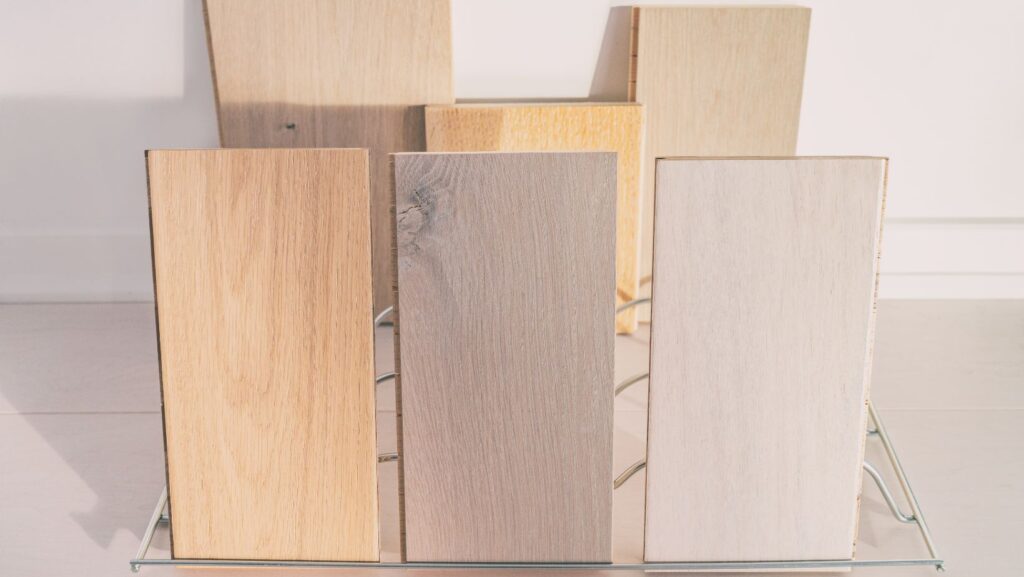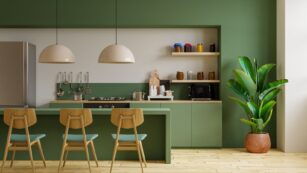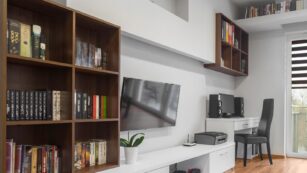
Choosing the right flooring for your home involves balancing aesthetics, practicality, budget, and maintenance. From cosy carpets to sleek hardwood, each type has its distinct benefits and drawbacks that impact its suitability for specific spaces. Here, we explore six popular flooring types, helping you decide which best fits your needs.
Hardwood Flooring
Hardwood has long been a favourite in residential design. Its natural beauty and timeless appeal add character and value to any space, especially in living rooms and bedrooms. A major advantage is that hardwood can be refinished multiple times, allowing you to refresh its look over the years. However, it’s also a high-maintenance option. Hardwood is prone to scratches, dents, and water damage, so it’s not ideal for kitchens or bathrooms. The cost of installation and refinishing can also be significant, making hardwood a long-term investment.
Laminate Flooring
Laminate flooring is a popular choice for those who love the look of hardwood but seek a more budget-friendly option. Made from synthetic materials, laminate can mimic the appearance of wood or stone and comes in a variety of designs. It’s durable and resistant to scratches, making it great for high-traffic areas like hallways and kitchens. Yet, laminate doesn’t handle moisture well, so it’s not suitable for bathrooms or areas prone to spills. Additionally, once damaged, it’s hard to repair, and it doesn’t offer the same lifespan as genuine hardwood.
Carpet Flooring
Carpet remains a go-to choice for comfort. Its plush feel and insulating properties make it ideal for bedrooms and living rooms, where warmth and soundproofing are priorities. Carpets come in countless colours and textures, allowing for personalized styling.

On the downside, carpets require regular cleaning to prevent stains and allergen build-up, making them less desirable in high-traffic or pet-friendly homes. This leads to debates, especially for rental properties, over carpets vs. hard flooring and which is easier to maintain in such settings.
Tile Flooring
For durability and moisture resistance, tile flooring is an unbeatable option. Ceramic or porcelain tiles work well in kitchens, bathrooms, and mud rooms, where spills and humidity are common. They are easy to clean and come in many styles, from modern patterns to natural stone textures. Yet, tiles can be hard and cold underfoot, making them less comfortable in areas where you might want a softer feel. Additionally, they can be slippery when wet, so choosing slip-resistant tiles for certain areas is wise.
Vinyl Flooring
Vinyl flooring has come a long way in terms of style and durability. It’s waterproof, affordable, and available in designs that mimic wood or stone. Vinyl is softer underfoot than tile, making it a warmer choice for kitchens or laundry rooms.

However, lower-quality vinyl can wear down quickly, and it’s vulnerable to discoloration from prolonged sun exposure. While vinyl provides budget-friendly durability, it might not add the same value to a home as hardwood or tile.
Engineered Wood
Engineered wood is a hybrid that combines natural wood layers with high-quality plywood, resulting in a material that looks like hardwood but is more resistant to moisture. It’s generally more affordable than solid hardwood and offers greater stability in temperature changes, making it a good choice for basements or humid climates. However, engineered wood can only be refinished a limited number of times due to its thinner top layer.
Conclusion
Each flooring type has unique advantages and limitations. Carpeting brings warmth and comfort, while hardwood offers timeless elegance. Laminate and vinyl cater to budget-conscious homeowners seeking durability and style. Tiles are robust and moisture-resistant, ideal for high-moisture areas, whereas engineered wood offers a compromise between hardwood’s beauty and laminate’s durability. The best choice depends on your priorities, be it maintenance, comfort, or style.












